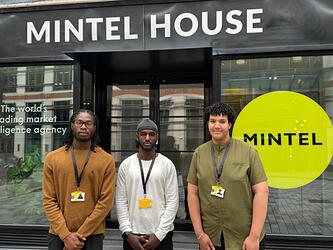To err is human, to research also human
The claim that ‘all you need is the right analytics platform' has become the accepted norm as research buyers increasingly opt for software over traditional approaches. Once thought to have no legitimate role within quality research, these online platforms have matured and multiplied. They are comprehensive, impressive and we aspire to work with them. As they scale, their fees tumble.
This shifting emphasis finds quantitative specialists, both client and agency side, searching for new ways to add value in a severely disrupted industry. One in which they struggle to compete against automated systems which have the potential to deliver more, in a fraction of the time and effort. As these platforms develop and invest in AI, the scope and resources allocated to traditional research narrows still. This is not pseudo intellectual conjecture about the future. This is now.
Despite its obvious perils, researchers are cowed as this age of automated insight dawns and in our silence, it gains traction and credibility. Ironically, as we increase pace to compete, we are tempted to think more like the AI software aspiring to replace us.
We mine data
We scour data for correlations, any and all, before weaving a story, which implies causation. This, an analyst’s greatest crime. Under pressure to glean more from data, we underscore our value with overstated language. We are tempted to oversell interpretation, pretending that statistically significant differences are practically significant differences, interesting and actionable. This is what AI does.
We confuse data visualisation with analytics
Beautiful data is gratifying. Without visually engaging, compelling communication, our efforts are for nought. However, visualisation alone is not analytics. In haste, analysis is reduced to eyeballing graphs before drawing conclusions. Our brains are hard-wired to find patterns; too easily fooled by randomness and the interrelated nature of things. We see what we want to see. So does AI.
We apply old models to new problems
We tend to trust that an approach that worked before, will work again. We align with techniques we like and with which our colleagues feel comfortable. When we discover a good hammer, every problem looks like a nail. In other words, we prefer to look at new data through the lens of old data. So does AI.
Good software increases productivity but great software lulls us into suspending critical thought. As such, AI is a tricky prospect when combined with slick dashboards. Blindly following, or thinking as AI does, is a recipe for bogus insight, which is difficult to shake, given time to settle. The risk of reaching faulty conclusions mounts exponentially as businesses float away inside AI bubbles.
With critical and creative thinking, our better angels, we avoid the very traps toward which AI will lunge, by design and without exception. Working well with automatic insights requires a higher level of alertness, the redoubling of our efforts to wrestle with and validate its findings, and to question black box techniques.
When we do not imitate it, AI is a good friend. It helps us carve through data, rapidly test new algorithms and explore all possibilities. Pointing the way to new avenues of insight, we see patterns undetected by traditional methods or novel perspectives which we never imagined or found reason to investigate.
By combining AI with genuine research craft, we become the rock stars of the marketing world. In fact, this is what we must become. Otherwise this a race to the bottom in a price war without a winner. This means that the ‘right' analytics platform is one capable of posing more questions than it can answer, demanding more research and not less. It is itself the proof that it could never be all that we need. That is what AI has done.
Ryan Howard is director advanced analytics at Simpson Carpenter

We hope you enjoyed this article.
Research Live is published by MRS.
The Market Research Society (MRS) exists to promote and protect the research sector, showcasing how research delivers impact for businesses and government.
Members of MRS enjoy many benefits including tailoured policy guidance, discounts on training and conferences, and access to member-only content.
For example, there's an archive of winning case studies from over a decade of MRS Awards.
Find out more about the benefits of joining MRS here.













0 Comments